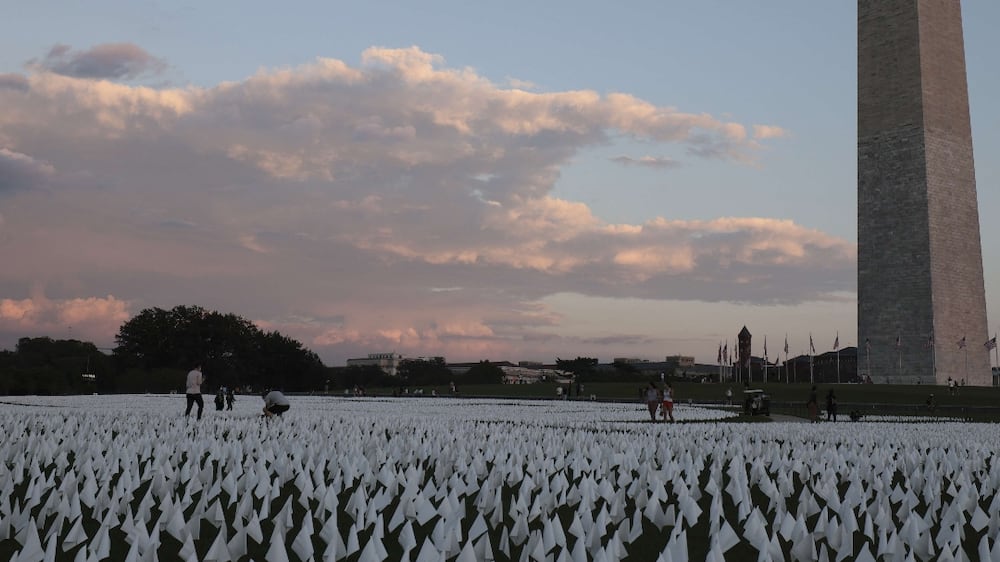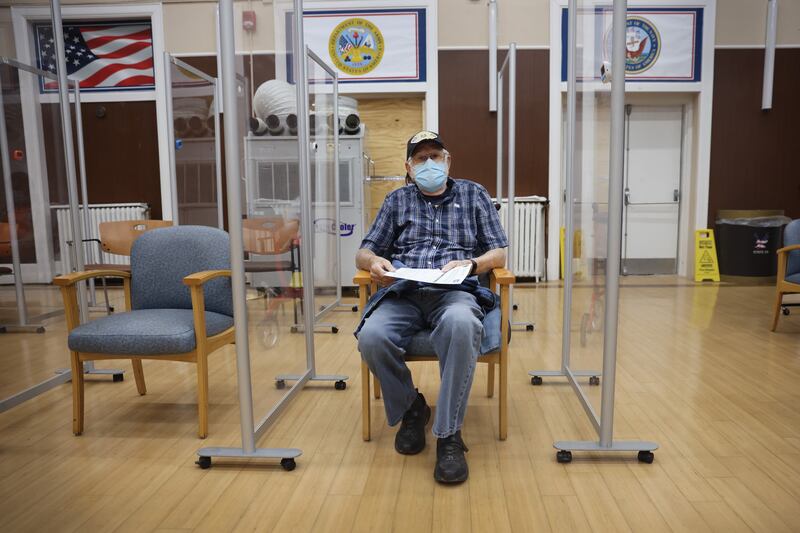As the Northern Hemisphere winter approaches, doctors are concerned that influenza may re-emerge in earnest after a sharp drop in Covid-19 case numbers.
When nations introduced social distancing and mask-wearing after the coronavirus outbreak in late 2019, numbers of flu cases fell away dramatically.
The concern is that the illness could return in earnest this winter now that restrictions have been eased in many countries.
In a typical year, several factors may cause flu cases to peak in winter, such as people spending longer indoors and that in cooler conditions the virus remains infectious on surfaces for longer.
The National looks at what may be in store over winter.
What took place last winter?
As was widely reported, cases of influenza were much lower in the Northern Hemisphere in the winter of 2020/21, because efforts to control the spread of the coronavirus also reduced the transmission of influenza.
In the US, for example, Scientific American reported that about 700 deaths from influenza were recorded by the US Centres for Disease Control and Prevention in the winter of 2020/21, compared to 22,000 in 2019/20 and 34,000 in 2018/19.
The proportion of respiratory specimens (such as nasal swabs) testing positive for influenza after being collected as part of national disease surveillance in the US also shows it was in retreat.
In the 2017/18, 2018/19 and 2019/20 influenza seasons, between 26.2 and 30.3 per cent of samples tested positive but last winter it was only 0.2 per cent.
Similar patterns were seen across many other countries in the Northern Hemisphere.
What happened in the Southern Hemisphere?
While October to May is when flu cases tend to peak in the Northern Hemisphere, the opposite is the case in the Southern Hemisphere, where flu season runs from April to October.
That means that Australia and New Zealand have now experienced two winter flu seasons since the Covid-19 pandemic broke.
By late October, there were 584 influenza cases confirmed this year by the National Notifiable Diseases Surveillance System in Australia.
For comparison, in 2020 there were 21,266 cases, while in 2019 the number was 313,033. So, last year’s flu season in Australia saw far fewer cases than the norm and this year’s saw a further big fall.
The strict border restrictions in Australia and New Zealand are thought to have played a big part in keeping the disease at bay by preventing people from bringing in influenza.
What factors will affect the current winter flu season?
Northern Hemisphere nations typically do not have the strict border restrictions credited with keeping Australia and New Zealand’s influenza – and coronavirus – rates low.
Also, they have fewer lockdown restrictions than they did last winter, increasing the chance of an influenza resurgence.
As there has been very little influenza circulating during the pandemic, people’s immunity may have waned, raising the risk of more serious infections.
“It’s not that the virus is more disease-causing, but your body reacts badly to not having had regular contact,” said Dr Bharat Pankhania, a senior clinical lecturer and consultant in communicable disease control at the University of Exeter in the UK.
In October the European Centre for Disease Prevention and Control gave a warning that the coming flu season could be severe. It said there were signs from countries such as Croatia that levels of flu are high and the subtype detected, H3N2, is one against which vaccines struggle.
“It’s one that old people don’t make good immunity against,” said Dr Pankhania, who expects this winter to see more influenza than the last.
H3N2 is a subtype of influenza A, one of two types that cause seasonal epidemics, the other being influenza B.
Could flu be more deadly than Covid-19 this winter?
Prof Paul Hunter, an infectious diseases specialist and professor in medicine at the University of East Anglia in the UK, said a sharp rise in flu cases could place severe pressure on hospitals already under strain from Covid-19.
He said in the UK 20,000 people or more typically die of flu in a year, which is more than the number likely to die from Covid-19 in the country over the winter
There is the additional risk of people becoming infected with both the coronavirus and flu simultaneously, which can prove particularly deadly.
“If you get Covid and around the same time you get flu, you’re about twice as likely to die than if you get Covid [alone],” said Prof Hunter.
Flu vaccination campaigns have recently been launched in the UAE, as well as other nations, to help protect people this winter.
Prof Hunter said the lack of flu cases in the Southern Hemisphere has made it harder for scientists to decide which vaccines to give, as these are chosen based on the flu viruses currently circulating and expected to circulate.
“The choice of viruses to go into the vaccine is more hit and miss. We hope to have the right ones but we won’t necessarily know,” he said.
US Covid-19 death toll surpasses 1918 flu pandemic























